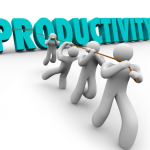How to increase your presentation productivity?
Do you spend countless hours preparing for presentations yet still feel like your productivity could be better?
Perhaps you’re not alone in this struggle.
Many professionals often feel overwhelmed by the demands of creating and delivering compelling presentations that engage their audience and communicate their message effectively.
But fear not! In this blog post, we’ll discuss ten proven tips to help you increase your presentation productivity, so you can spend more time on what matters.
We’ll cover various aspects of presentation productivity, such as organizing your content, optimizing your delivery, and leveraging templates to streamline your workflow.
So, let’s dive in!
Table of Contents
1. Plan and organize your presentation
Planning and organizing your presentation ahead of time can save you a lot of time and effort in the long run.
By having a clear idea of what you want to present and how you want to present it, you’ll be able to create a more effective and engaging presentation that meets your objectives.
To plan and organize your presentation effectively, start by setting clear objectives. Identify your intended audience and the message you aim to communicate to them.
Once you have a clear idea of your objectives, organize your presentation into clear sections that flow logically from one to the next. You can use pre-made free PowerPoint templates to help you with the flow of the presentation.
Ensure that you allocate sufficient time to prepare and rehearse your presentation. This will enable you to pinpoint any areas that require enhancement and boost your confidence levels when delivering the presentation.
2. Use a clear and concise structure
A clear and concise structure is essential for an effective presentation. By enabling your audience to follow your presentation seamlessly, it becomes easier to communicate your message with clarity and effectiveness.
Begin the process of structuring your presentation by organizing your content into distinct sections that are purposeful and flow logically from one to another.
To enhance clarity and facilitate audience comprehension, use descriptive headings and subheadings.
Moreover, breaking up large blocks of text with bullet points or numbered lists will make your presentation more visually appealing and digestible.
3. Use Visual Aids
Utilizing visual aids can be an effective method for captivating your audience and presenting intricate ideas more understandably. They can help you emphasize key points, break up large blocks of text, and provide a more visually appealing presentation.
To effectively use visual aids in your presentation, choose appropriate images, charts, or graphs that illustrate your points. Make sure to keep your visual aids simple and easy to understand.
Limit graphics or animations that could divert your audience’s attention from your core message.
And be sure to include a caption or brief explanation of each visual aid to help your audience understand its relevance.
4. Use pre-built presentation templates
Pre-built presentation templates can save you a lot of time and effort when creating your presentation.
Utilizing templates in your presentation can ensure a uniform visual style and aid in preserving brand identity.
To effectively use professional ppt templates, start by selecting a template that aligns with your objectives and audience.
Tailor the template according to your requirements by inserting your own content, visuals, or branding components.
Examining the template thoroughly before utilizing it to confirm that it meets your specifications and aligns with your brand’s image is essential.
5. Practice your delivery
Practicing your delivery is essential for a polished and confident presentation.
Providing a means to identify areas for improvement and increasing confidence during presentation delivery can prove immensely helpful.
To practice your delivery effectively, start by rehearsing your presentation out loud. You can either record yourself presenting or seek feedback from a colleague who can listen to your presentation and offer constructive criticism.
Practice your timing and make sure to pause for emphasis where necessary. And be sure to practice your body language and eye contact to convey confidence and engagement.
6. Be Confident
Confidence is vital when delivering a presentation. It helps you engage your audience and convey your message effectively.
Begin by familiarizing yourself with the material and rehearsing your presentation to boost your confidence.
Dress appropriately, arrive early to set up your equipment, and get comfortable in your surroundings.
Maintaining eye contact and speaking clearly while delivering your presentation is crucial to keep your audience engaged.
7. Take breaks and stay hydrated
Taking breaks and staying hydrated during your presentation can help you maintain energy and focus. Having access to water or other hydrating beverages during your presentation can be beneficial in preventing fatigue and dehydration, which may otherwise have a detrimental effect on your performance.
Make sure to take breaks and stay properly hydrated to ensure your presentation is delivered at your best.
Schedule short breaks throughout your presentation to allow yourself and your audience to recharge.
8. Time Management
Effective time management is crucial for a successful presentation.
It ensures that you cover all your key points without rushing or going over the allotted time, which can leave your audience feeling overwhelmed or disengaged.
To effectively manage your time during your presentation, start by outlining your PowerPoint presentation and estimating how long each section should take.
Allocate sufficient time for Q&A and breaks, and be prepared to adjust your content as needed to stay within your timeframe. Practice your delivery and timing beforehand to ensure you can cover all your key points within the allotted time.
And finally, keep an eye on the clock during your presentation to stay on track.
9. Handle Q&A Effectively
Handling Q&A effectively is an essential part of any presentation. It allows you to engage with your audience, demonstrate your expertise, and address any concerns or misconceptions.
To prepare for and handle Q&A effectively, start by anticipating potential questions your audience may have and preparing concise answers.
Encourage your audience to ask questions and allocate sufficient time for Q&A in your presentation. When answering questions, listen carefully to the question, respond clearly and concisely, and be honest if you don’t know the answer.
10. Evaluate and Improve
Evaluating and improving your presentation skills is an ongoing process that can help you become a more effective presenter.
Seeking feedback from your colleagues or audience is valuable for evaluating and enhancing your presentation skills. Pay close attention to recurring themes or suggestions to guide your improvement.
Additionally, reflecting on your own performance can help you identify areas of strength and areas that require further development.
Utilizing these strategies can ultimately enhance your presentation quality and increase your overall productivity. Consider attending workshops or courses on presentation skills to develop your abilities further.
Finally, practice, practice, practice – the more presentations you deliver, the more you will learn about what works best for you and your audience.
Wrapping It Up
Increasing your presentation productivity can be made easier and less intimidating.
By implementing the tips and strategies we’ve shared in this blog, you can streamline your workflow, organize your content, and deliver compelling presentations that captivate your audience.
Remember to focus on the essentials, such as outlining your presentation, practicing your delivery, and using technology to your advantage. It’s also essential to overcome common challenges like procrastination and anxiety by setting realistic goals and cultivating a growth mindset.
So, start incorporating these tips into your presentation preparation process today, and watch your productivity soar!







